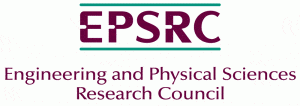The EPSRC has announced it is introducing a New Investigator Award Scheme to replace the First Grant Scheme. The First Grant scheme will close on 24th July 2017 at 4pm and the New Investigator Awards will open on 25th July 2017. Like the First Grant there are no deadlines for the NIA scheme.
A document summarising the new scheme is attached along with current FAQs about the scheme. The main changes are increased flexibility around eligibility and the size/structure of the bid (as detailed below).
Eligibility
Like the First Grant scheme, the NIA scheme is directed at individuals who have “recently acquired their first academic lectureship position, have not previously led an academic research group or been the recipient of a significant grant”. There is no specific requirement around time since PhD or time since first academic post in the NIA scheme.
Regarding previous grants, the wording is “Applicants should not hold, or have held, grants or industry sponsorship which have provided funds to set up a research group. This includes any previous funding which provides PDRA time, equipment over £10k or, normally, any research grant over £100,000.”
Like the First Grant, an application to the NIA scheme should be your first application to EPSRC as Principal Investigator (except Postdoctoral Fellowships, overseas travel grants or unsuccessful Early Career Fellowships).
Size/structure of projects
The limit of £125k FEC has been removed to provide more flexibility. EPSRC have indicated that projects would typically comprise a PI (for a proportion of time, e.g. 20% FTE) plus a PDRA for 1-3 years. Normally Co-Is are not permitted, unless they clearly bring complementary skills to the project and are from a different discipline to the PI.
There is a significant emphasis on career development and university support which “should be appropriate to the foundation of a research group, including allocation of resources (e.g. students, access to facilities, PDRA time etc.)”.

